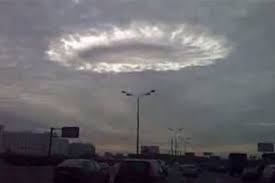| Online: | |
| Visits: | |
| Stories: |

| Story Views | |
| Now: | |
| Last Hour: | |
| Last 24 Hours: | |
| Total: | |
El Niño Alert, The Wrath of God is Developing – Get Ready – NASA Alert
El Niño is a band of anomalously warm ocean water temperatures that periodically develops off the Pacific coast of South America. Extreme climate change pattern oscillations fluctuate weather across the Pacific Ocean which results in fluctuating droughts, floods, and crop yields in varying regions of the world. There is a phase of ‘El Niño–Southern Oscillation’ (ENSO), which refers to variations in the temperature of the surface of the tropical eastern Pacific Ocean (El Niño and La Niña) and in air surface pressure in the tropical western Pacific. The two variations are coupled: the warm oceanic phase, El Niño, accompanies high air surface pressure in the western Pacific, while the cold phase, La Niña, accompanies low air surface pressure in the western Pacific. Mechanisms that cause the oscillation remain under study. Developing countries dependent upon agriculture and fishing, particularly those bordering the Pacific Ocean, are the most affected. El niño is Spanish for “the boy”, and the capitalized term El Niño refers to the Christ child, Jesus, because periodic warming in the Pacific near South America is usually noticed around Christmas. Most tropical cyclones form on the side of the subtropical ridge closer to the equator, then move poleward past the ridge axis before recurving into the main belt of the Westerlies. When the subtropical ridge position shifts due to El Niño, so will the preferred tropical cyclone tracks. Areas west of Japan and Korea tend to experience much fewer September–November tropical cyclone impacts during El Niño and neutral years. During El Niño years, the break in the subtropical ridge tends to lie near 130°E, which would favor the Japanese archipelago. During El Niño years, Guam’s chance of a tropical cyclone impact is one-third of the long-term average. The tropical Atlantic ocean experiences depressed activity due to increased vertical wind shear across the region during El Niño years. On the flip side, however, the tropical Pacific Ocean east of the dateline has above-normal activity during El Niño years due to water temperatures well above average and decreased windshear. Most of the recorded East Pacific category 5 hurricanes occur during El Niño years in clusters.
Please Subscribe on YouTube - https://www.youtube.com/user/MRSTARGAZERNATION




